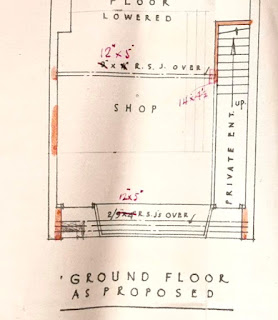A letter of thanks and appreciation appeared in the Herts Advertiser in 1945 from the head teacher of Princess Road School, London. As there were five schools with the same name in different parts of the capital it was necessary to identify the correct establishment. The school which came to our city was Princess Road School, Camden, now renamed Primrose Hill Primary School. There were some 300 junior children and the same number of infants. It is not yet known whether both departments came, but we know that the school was paired with Fleetville School, which of course then only occupied the Royal Road building and its recently acquired huts. Would there have been sufficient space for 600 children, if the hall was used for two classes?
 |
| Princess Road School, now renamed Primrose Hill Primary School, Camden. |
Fleetville's own children attended school in the mornings, while Princess Road used the buildings in the afternoons. Lest we imagine that this straightforward arrangement lasted uninterrupted for six years we must take into account a number of varied factors, including parents choosing to have children returned to London at any time they chose, children transferring to a senior school when they reached eleven, parents moving to a different town when allocated to new jobs; so the situation was fluid. London County Council's own records are therefore scratchy.
 |
| A group of children – the adults are possibly their teachers – walking from the station on arrival. It is not known which school they were part of. HERTS ADVERTISER. |
We know from occasional reports in the Herts Advertiser that the children ranged far and wide around the city visiting places of interest – and at least one letter home mentions a history study of the Romans at Verulamium. Of course!
 |
| Princess Road School shared the accommodation at Fleetville School for up to six years – afternoons only! |
Today, we know that Primrose Hill Primary is interested in its own history, because it has a history page on its website. So it is possible the school will wish to add a little extra paragraph about the extended school trip their children experienced between 1939 and 1945.
In the next post we will discover what happened to another Camden school, Haverstock Hill, when it was evacuated to St Albans.











